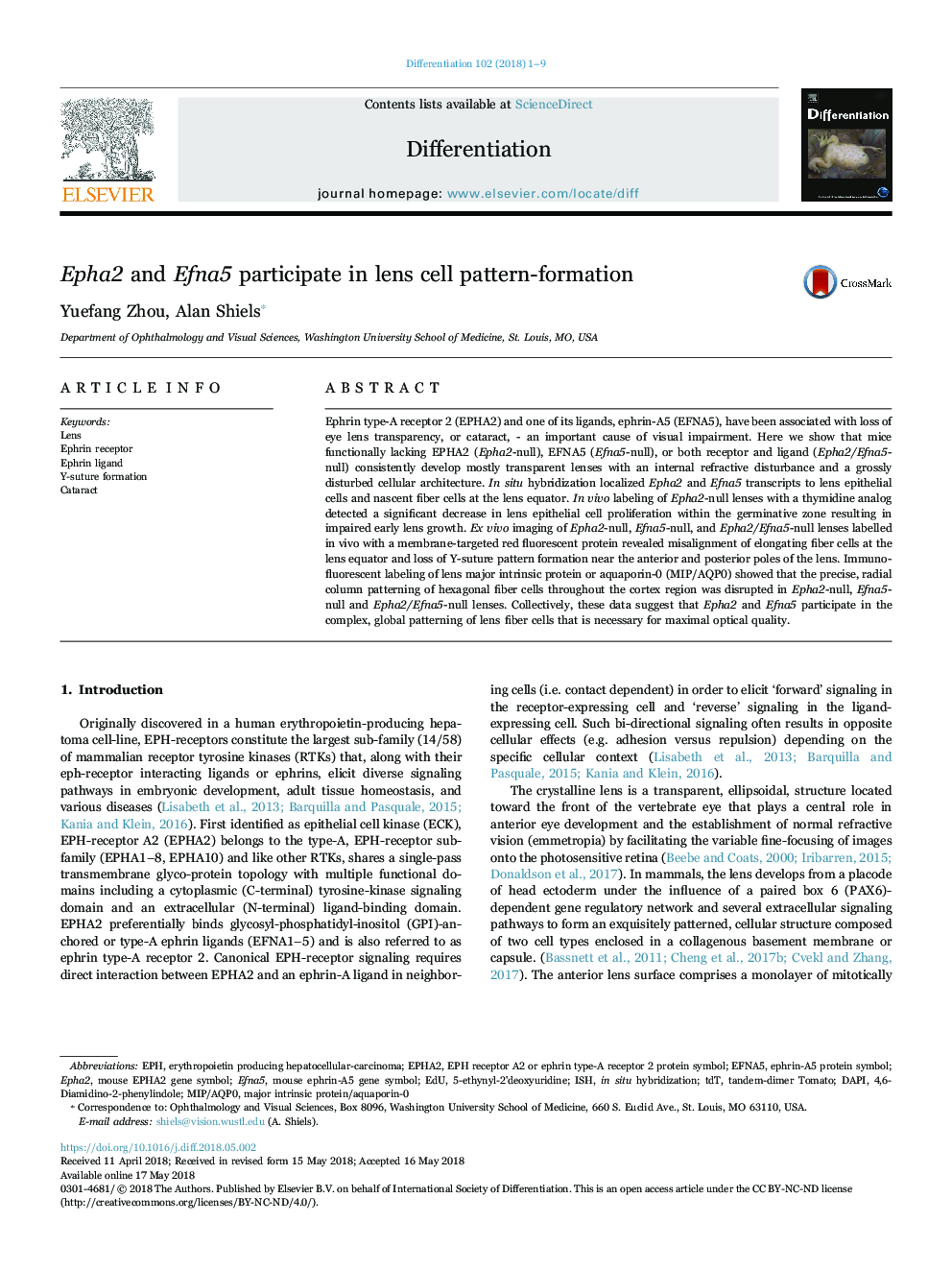| Article ID | Journal | Published Year | Pages | File Type |
|---|---|---|---|---|
| 8436166 | Differentiation | 2018 | 9 Pages |
Abstract
Ephrin type-A receptor 2 (EPHA2) and one of its ligands, ephrin-A5 (EFNA5), have been associated with loss of eye lens transparency, or cataract, - an important cause of visual impairment. Here we show that mice functionally lacking EPHA2 (Epha2-null), EFNA5 (Efna5-null), or both receptor and ligand (Epha2/Efna5-null) consistently develop mostly transparent lenses with an internal refractive disturbance and a grossly disturbed cellular architecture. In situ hybridization localized Epha2 and Efna5 transcripts to lens epithelial cells and nascent fiber cells at the lens equator. In vivo labeling of Epha2-null lenses with a thymidine analog detected a significant decrease in lens epithelial cell proliferation within the germinative zone resulting in impaired early lens growth. Ex vivo imaging of Epha2-null, Efna5-null, and Epha2/Efna5-null lenses labelled in vivo with a membrane-targeted red fluorescent protein revealed misalignment of elongating fiber cells at the lens equator and loss of Y-suture pattern formation near the anterior and posterior poles of the lens. Immuno-fluorescent labeling of lens major intrinsic protein or aquaporin-0 (MIP/AQP0) showed that the precise, radial column patterning of hexagonal fiber cells throughout the cortex region was disrupted in Epha2-null, Efna5-null and Epha2/Efna5-null lenses. Collectively, these data suggest that Epha2 and Efna5 participate in the complex, global patterning of lens fiber cells that is necessary for maximal optical quality.
Keywords
Related Topics
Life Sciences
Biochemistry, Genetics and Molecular Biology
Cancer Research
Authors
Yuefang Zhou, Alan Shiels,
